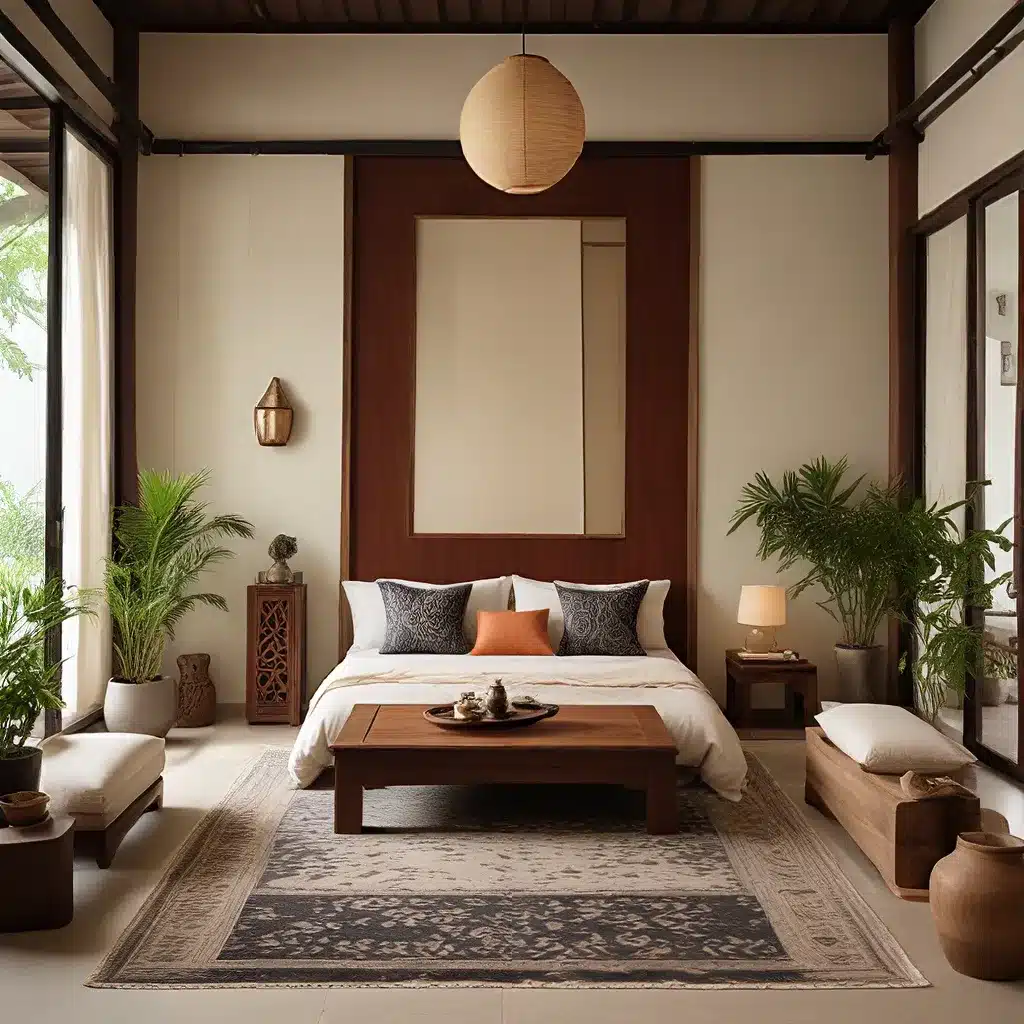
In the ever-evolving landscape of interior design, a harmonious fusion of styles has emerged, captivating the hearts and minds of homeowners and design enthusiasts alike. Japandi, a seamless blend of Japanese minimalism and Scandinavian functionality, has become a sought-after design philosophy that promises to transform living spaces into serene havens of tranquility and sophistication.
Embracing the Essence of Zen and Hygge
At the core of the Japandi design ethos lies the intersection of two distinct cultural influences: the Japanese Zen philosophy and the Scandinavian concept of hygge. The former, rooted in the principles of Buddhism, emphasizes simplicity, mindfulness, and a harmonious connection with the surrounding environment. This translates into interiors that evoke a sense of calm and balance, where the focus is on the essential elements and the strategic use of natural materials.
Minimalism and simplicity are the hallmarks of Japanese-inspired design, with a deliberate decluttering of spaces to promote clarity and functionality. The use of muted color palettes, organic textures, and strategic lighting further enhances the serene atmosphere, inviting occupants to embrace a Zen-like state of tranquility.
On the other side of the Japandi spectrum, the Scandinavian concept of hygge adds a warm and cozy element to the minimalist aesthetic. Hygge, a Danish term that embodies a sense of comfort, contentment, and well-being, is seamlessly integrated into Japandi spaces through the use of soft, cozy textiles, ambient candlelight, and nature-inspired decor. This fusion of Japanese simplicity and Scandinavian coziness creates an environment that is not only visually appealing but also emotionally comforting, fostering a deep connection to the present moment.
The Beauty of Natural Materials
One of the defining characteristics of Japandi design is the celebration of natural materials. Both Japanese and Scandinavian design traditions share a deep appreciation for the inherent beauty and authenticity of organic materials, such as wood, stone, metal, bamboo, leather, and natural fibers like cotton and wool.
In Japandi interiors, these materials are often left in their natural state, showcasing their unique textures, colors, and imperfections. This approach aligns with the Japanese concept of wabi-sabi, which embraces the beauty of imperfection and the transient nature of the world. By incorporating these materials, Japandi design creates a strong visual connection to the natural world, evoking a sense of warmth, tranquility, and sustainability.
Moreover, the use of natural materials in Japandi design extends beyond just aesthetic considerations. These materials contribute to the overall well-being of the occupants, fostering a connection to the earth and promoting a biophilic design approach that enhances indoor-outdoor integration.
The Versatility of Neutral Palettes
Complementing the natural materials in Japandi design is the use of neutral color palettes. These understated, muted tones of whites, grays, beiges, and other soft hues create a serene and harmonious foundation for the interiors. Neutral colors serve as a versatile backdrop, allowing other design elements, such as textures, patterns, and accent pieces, to take center stage.
The beauty of a neutral color scheme in Japandi design lies in its timeless appeal and the flexibility it offers. These subdued hues contribute to the illusion of space and light, making rooms feel more open and airy. Additionally, the neutral palette allows for easy adaptability to changing design preferences over time, ensuring that Japandi-inspired spaces remain relevant and visually appealing for years to come.
Functional and Purposeful Furniture
Japandi design also places a strong emphasis on functional furniture, where form and function work in harmony to create spaces that are both aesthetically pleasing and highly efficient. From sofa beds and ottomans with hidden storage to modular dining tables, every piece is carefully crafted with specific purposes in mind, ensuring that each element serves a meaningful role within the space.
This focus on purposeful design aligns with the Japandi principles of practicality and intentionality, where every aspect of the interior is thoughtfully considered to optimize the use of space, enhance organization, and contribute to the overall usability of the living environment.
Designing a Japandi-Inspired Oasis
As you embark on your Japandi journey, it’s crucial to immerse yourself in the wealth of educational resources available. Exploring accredited online interior design courses that cover Japandi design can provide invaluable insights into the intricacies of this harmonious style. Attend workshops or seminars dedicated to Japanese design, and delve into literature that dissects the fusion of Eastern and Western influences.
By tapping into these educational opportunities, you can hone your understanding of Japandi design, from the philosophical underpinnings to the practical considerations of color schemes, material selection, and spatial planning. Engaging with a community of design enthusiasts and professionals can also offer a rich exchange of ideas and inspiration, further enhancing your ability to create serene and harmonious Japandi-inspired interiors.
Embracing the Japandi Lifestyle
Embarking on the Japandi journey is more than just a design endeavor; it’s a holistic lifestyle choice that embraces the principles of simplicity, mindfulness, and a deep connection to the natural world. By incorporating Japandi design into your living spaces, you can cultivate an environment that not only captivates the senses but also nurtures your well-being and emotional connection to your surroundings.
In a fast-paced world where the need for tranquility and serenity has never been more pronounced, Japandi design offers a timely and transformative solution. By blending the best of Eastern and Western design philosophies, Japandi-inspired interiors have the power to transport us to a realm of Zen-like** calm, where the pursuit of beauty in simplicity and the celebration of imperfection become a way of life.

